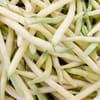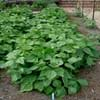Life Span
Annual
Perennial
Type
Vegetable
Flowering Plants, Fruits, Trees
Origin
Central America, South America
Anatolia, Asia, Europe, Iran, Maghreb, Morocco, Norway, The Hiamalayas
Types
Willow Leaf, Sieva Lima, Dixie Speckled
Flowering Cherries, Sour Cherries, Sand Cherries, Sweet Cherries, Capulin Cherries
Number of Varieties
Not Available
Habitat
Humid climates, Subtropical climates, Warmer regions
Forest edges, Wild, Woods
USDA Hardiness Zone
6-11
4-8
AHS Heat Zone
Not Available
10-1
Sunset Zone
Not Available
4, 5, 6, 7, 15, 16, 17
Habit
Vining/Climbing
Upright/Erect
Minimum Width
Not Available
Flower Color
White, Ivory
White
Flower Color Modifier
Bicolor
Not Available
Leaf Color in Spring
Green
Dark Green
Leaf Color in Summer
Green
Orange
Leaf Color in Fall
Green
Orange
Leaf Color in Winter
Green
Orange
Leaf Shape
Willow-shaped
Oblong
Plant Season
Not Available
Spring, Summer
Sunlight
Full Sun
Full Sun, Partial shade
Type of Soil
Loam, Sand
Loamy, Well drained
The pH of Soil
Acidic, Neutral, Alkaline
Slightly Acidic
Soil Drainage
Well drained
Average
Bloom Time
Indeterminate
Early Spring, Spring
Tolerances
Drought
Heat And Humidity, Not Available
Where to Plant?
Container, Ground, Pot
Ground
How to Plant?
Seedlings
Grafting, Seedlings, Transplanting
Plant Maintenance
High
Medium
Watering Requirements
Allow to dry out slightly between watering, Do Not over Water, Requires regular watering
Never Over-water, Over-watering can cause leaf problems or root diseases, Prefer drip-irrigation instead of Over-head watering, Water twice a day in the initial period
In Summer
Not so frequently
Lots of watering
In Spring
Alternate Days
Moderate
In Winter
Drought Tolerant
Average Water
Soil pH
Acidic, Neutral, Alkaline
Slightly Acidic
Soil Type
Loam, Sand
Loamy, Well drained
Soil Drainage Capacity
Well drained
Average
Sun Exposure
Full Sun
Full Sun, Partial shade
Pruning
Prune to control growth
Don't prune in the fall, Prune if you want to improve plant shape, Prune in late winter, Remove dead or diseased plant parts, Remove deadheads
Fertilizers
organic fertlizers
All-Purpose Liquid Fertilizer
Pests and Diseases
Aphids, Armyworm, Bean rust, Bean weevils, Corn earworm, Cucumber beetles, Curly top, Damping off, Darkling beetles, Earwigs, Fusarium root rot, Grasshoppers, Leafhoppers, Loopers, Lycaenid pod borers, Lygus bugs, Mosaic viruses, Nematodes, Powdery mildew, Saltmarsh caterpillar, Seedcorn maggot, Slugs, Snails, Spider mites, Stink bugs, Thripes, White mold, Whiteflies
Aphids, Bacterial Canker, Black Knot, Brown Rot, Caterpillars
Plant Tolerance
Drought
Drought
Flowers
Insignificant
Yes
Flower Petal Number
Single
Not Available
Fragrant Flower
Not Available
Yes
Fragrant Fruit
Not Available
Yes
Fragrant Leaf
Not Available
No
Fragrant Bark/Stem
Not Available
No
Showy Bark
Not Available
Yes
Foliage Texture
Medium
Not Available
Foliage Sheen
Matte
Not Available
Self-Sowing
Not Available
No
Attracts
Not Available
Birds
Allergy
Not Available
Swelling in the face
Aesthetic Uses
Not Available
Showy Purposes
Beauty Benefits
Not Available
Not Available
Environmental Uses
Not Available
Air purification
Medicinal Uses
cholesterol-lowering, constipation, Digestive disorders, Fiber, Heart problems
Arthritis, Gout, Kidney problems, Rheumatoid arthritis, Swelling
Part of Plant Used
Seeds
Flowers, Fruits
Other Uses
Used As Food
Wood is used for making furniture
Used As Indoor Plant
No
No
Used As Outdoor Plant
Yes
Yes
Garden Design
Edible, Herb, Vegetable
Not Available
Botanical Name
PHASEOLUS lunatus
Prunus avium
Common Name
Butter Bean, Lima Bean
Cherry Tree
In Hindi
सेम फली
चेरी का पेड़
In German
Limabohne
Kirschbaum
In French
Haricot de Lima
Cerisier
In Greek
Γίγαντας
κερασιά
In Portuguese
feijão-Lima
árvore de cereja
In Polish
Lima Bean
wiśniowe drzewo
In Latin
Lima Bean
Cherry
Phylum
Tracheophyta
Magnoliophyta
Class
Magnoliopsida
Magnoliopsida
Clade
Angiosperms, Eudicots, Rosids
Angiosperms, Eudicots, Rosids
Tribe
Phaseoleae
Not Available
Subfamily
Faboideae
Not Available
Number of Species
Not Available
Not Available
Season and Care of Lima Bean and Cherry Tree
Season and care of Lima Bean and Cherry Tree is important to know. While considering everything about Lima Bean and Cherry Tree Care, growing season is an essential factor. Lima Bean season is Not Available and Cherry Tree season is Not Available. The type of soil for Lima Bean is Loam, Sand and for Cherry Tree is Loamy, Well drained while the PH of soil for Lima Bean is Acidic, Neutral, Alkaline and for Cherry Tree is Slightly Acidic.
Lima Bean and Cherry Tree Physical Information
Lima Bean and Cherry Tree physical information is very important for comparison. Lima Bean height is 60.00 cm and width Not Available whereas Cherry Tree height is 17.50 cm and width 17.50 cm. The color specification of Lima Bean and Cherry Tree are as follows:
Lima Bean flower color: White and Ivory
Lima Bean leaf color: Green
Cherry Tree flower color: White
- Cherry Tree leaf color: Dark Green
Care of Lima Bean and Cherry Tree
Care of Lima Bean and Cherry Tree include pruning, fertilizers, watering etc. Lima Bean pruning is done Prune to control growth and Cherry Tree pruning is done Don't prune in the fall, Prune if you want to improve plant shape, Prune in late winter, Remove dead or diseased plant parts and Remove deadheads. In summer Lima Bean needs Not so frequently and in winter, it needs Drought Tolerant. Whereas, in summer Cherry Tree needs Lots of watering and in winter, it needs Average Water.





